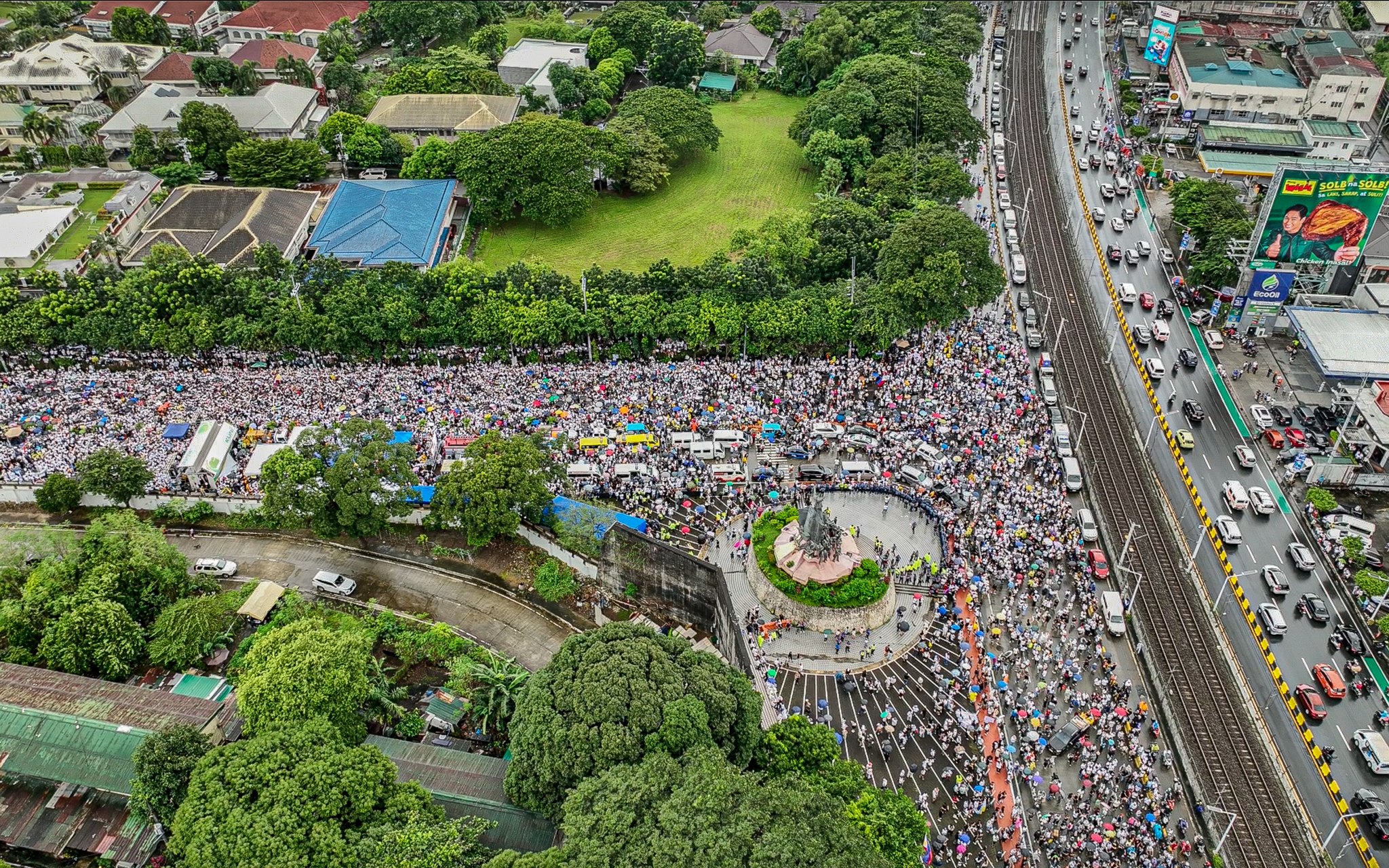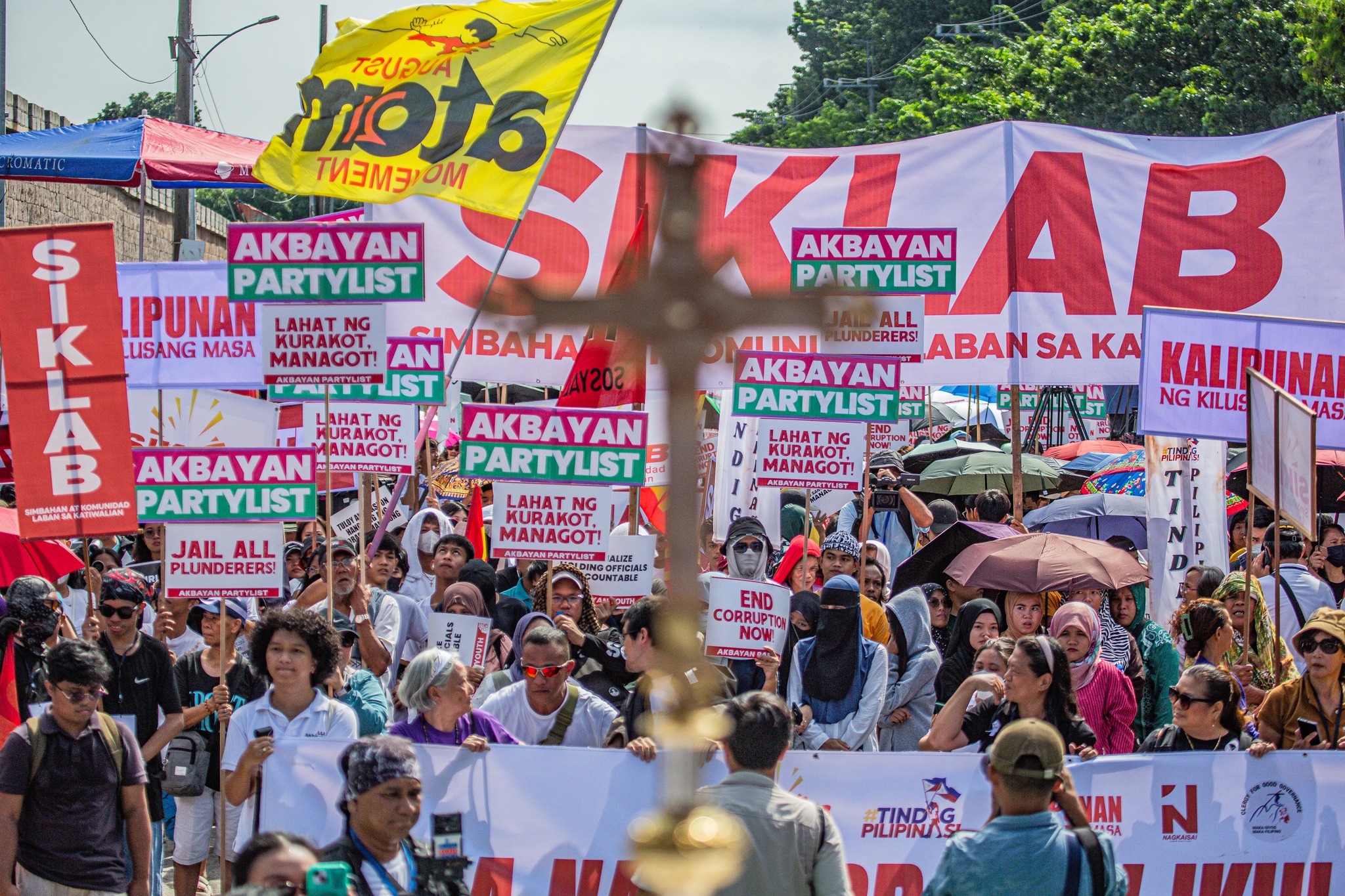September 21st, 2025 was a historic day for the Philippines. The 53rd anniversary of Martial Law’s declaration was again met with massive organized protest. But the day was not just about atrocities committed decades ago. The day was historic because people, in our hundreds of thousands, took to the streets to protest our oppression and robbery at the hands of the ruling classes today.

Photo credits: Gon Labudahon
For progressives, trade unionists, and leftists of all colors, it is always a cause of celebration when the people march. Yet as history shows, when the people decide that enough is enough and simmering discontent boils over in the streets, the people’s march is often accompanied by a slew of emotions — including anger. It was this righteous anger, the frustration at a system that normalizes our subordination, that we saw expressed in the throngs of people that mobilized across the country.
For most, indignation against the out-of-touch elites took the form of peaceful demonstrations. For some, rage against the system had to go beyond. We saw hundreds of disgruntled youth engage in direct confrontation with the state. Dissent turned into fury —- streets were occupied, establishments ransacked, and vehicles burnt. Police likewise responded in a brutal manner, arresting hundreds and lashing out even at journalists.
Once again, the contradictory nature of the people in arms has led to intense debate within progressive circles. Some condemned the violence of the mob as acts of hooliganism: directionless rage that hurt the reputation of the current movement against systemic corruption. Others went to the defense of these rioters, likely coming from an affirmation of the people’s spontaneity and the legitimacy of direct action.
For the Labor Education and Research Network (LEARN), what matters less is the “political content” (or the lack thereof) that drove these violent confrontations. Perhaps demanding that these people express their rage through programs and policies is not the point. Neither is it enough to just celebrate spontaneous, unorganized direct action. As trade unionists, we argue that the task of progressive forces is to help provide direction and structure to our legitimate feelings of frustration. This process would inevitably be informed by our own experiences, perspectives, values, and analyses of the social situation.

Photo credits: Gon Labudahon
Of course the people have the right to revolt in ways that make sense to them. But our job as organized forces is to help channel that energy into a politics and program of collective action. We cannot expect this solely from those disgruntled youth that stormed Mendiola. This is the task, historical one could say, of the organized left.
Shouldn’t we be asking how we might put forward a politics that addresses the root causes of the current upheaval? How do we mobilize the people’s fury into demands, even programs for action? Our focus shouldn’t be on what forms of action are legitimate. It should be about appealing to the sensibility, interests, and aspirations of the thousands that marched, and the millions that cheered us on.
Whether we develop a platform for the next elections, or a more general strategy of building people’s power, is a matter of political tactics.
As we go back to the practical work of cultivating the people’s anger, we continue with our immediate demands. We must continue pushing for accountability for the trillions stolen from us. To this end, we should support reforms such as people’s participation in the congressional budget hearings. We also join the calls to release those arrested during the recent upheaval.
There will be destruction as part of creating the new world that we want, especially if the powers that be react with violence. The people, in the moments that they become actors of history, do not always have to make sense. Making sense of the people’s wants and needs, translating feelings into programs and tactics, organizing mass movements — these are the objectives of collective action.
